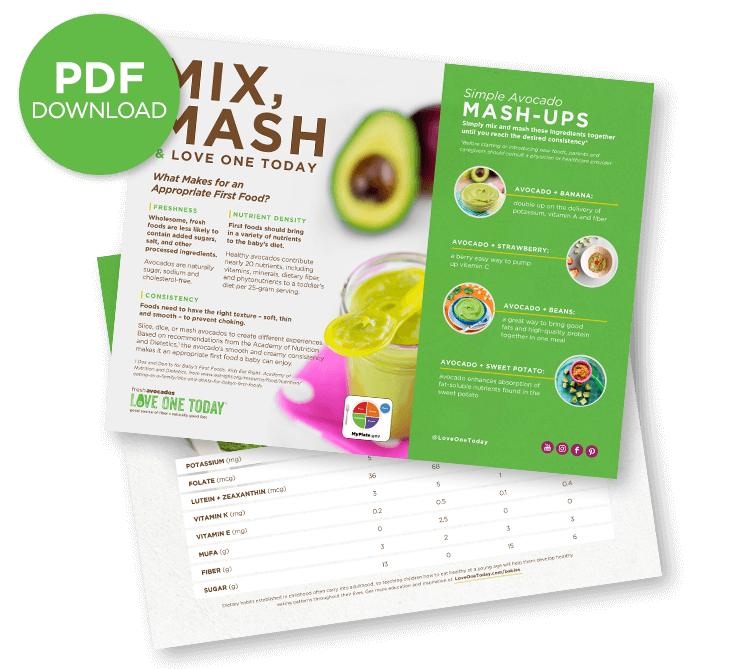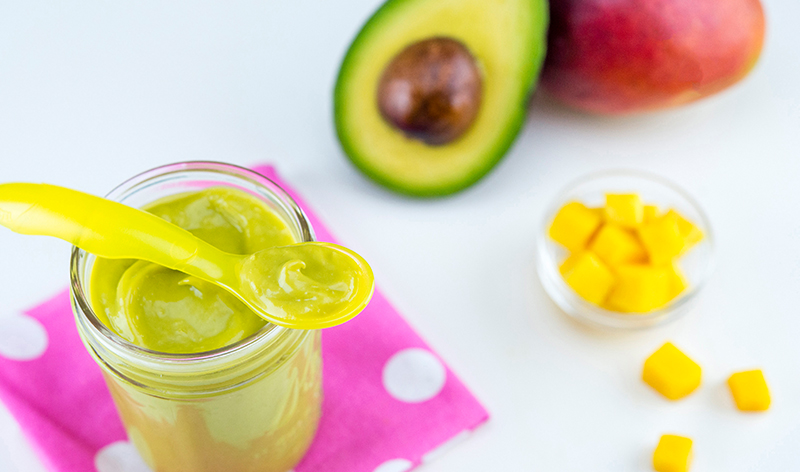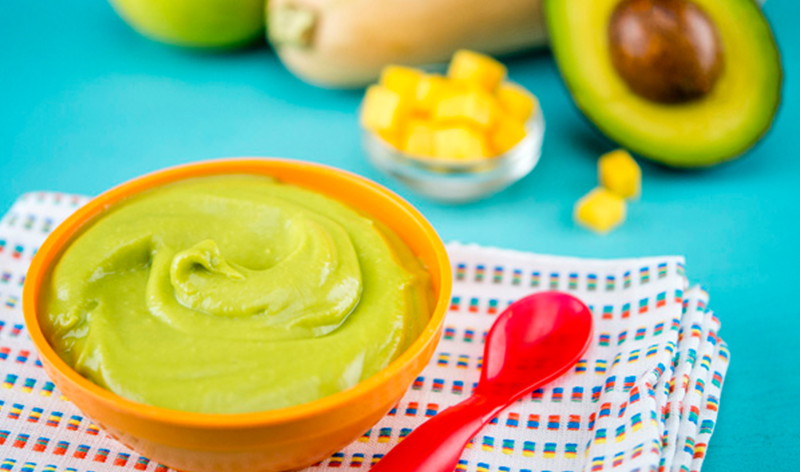What should baby’s first food be?
Spoiler. It’s an Avocado.
Navigating your baby’s early years can be daunting. As a new mother, with a desire to make your baby happy during the transition into solid foods and to ensure she is getting all the necessary nutrients, you might find yourself overwhelmed by the prospect of figuring out how and what to feed your baby. Take out the guesswork with this easy-to-navigate, quick visual reference about the health benefits of avocados for babies when introducing them early in life. Avocados stand out among other popular fruits in that they deliver five essential nutrients for toddlers (ages 1-3) — fiber (2 grams), vitamin C (2 milligrams), magnesium (10 milligrams), folate (20 micrograms), and vitamin K (5 micrograms) per 25-gram serving. A fun and effortless tool, this guide explains how avocados start nutrition right.
Simple resource guide with healthy tips and useful avocado mash-ups for your baby.
Nutrient-Dense Avocados Pack a Punch
A benefit of avocados for babies and toddlers is that they are a sugar-free healthy choice that contributes 2.5 grams of monounsaturated fat and 0.5 gram of polyunsaturated fat per 25-gram serving to a children’s diet. Preparing delicious, homemade foods using avocados and other healthy options like mangoes, strawberries, pears and squash helps broaden children’s palates and open the gateway into enjoying fruits and vegetables for a lifetime. Observational studies have demonstrated later health benefits of early nutrition choices when infants consumed higher amounts of fruits and/or vegetables, such as better body weights1, lower blood pressure2, lower risk of stroke3 and some cancers4 as well as overall higher fruit and vegetable intake5. Future research on ideal infant and toddler foods, including avocado, is warranted to further explore their potential in both early life and later-life health outcomes.6
Simple and delicious baby-friendly recipe.
Note: It is important to speak to a pediatrician before adding solid foods to an infant’s diet
References:
1. Saavedra, J.M.; Deming, D.; Dattilo, A.; Reidy, K. Lessons from the Feeding Infants and Toddlers Study in North America: What Children Eat, and Implications for Obesity Prevention. Ann Nutr Metab. 2013, 62 Suppl 3, 27-36.
2. Moore, L.L.; Singer, M.R.; Bradlee, M.L.; Djousse, L.; Proctor, M.H.; Cupples, L.A.; Ellison, R.C. Intake of Fruits, Vegetables, and Dairy Products in Early Childhood and Subsequent Blood Pressure Change. Epidemiology. 2005, 16, 4-11.
3.Ness, A.R.; Maynard, M.; Frankel, S.; Smith, G.D.; Frobisher, C.; Leary, S.D.; Emmett, P.M.; Gunnell, D. Diet in Childhood and Adult Cardiovascular and All Cause Mortality: The Boyd Orr Cohort. Heart. 2005, 91, 894-898.
4. Maynard, M.; Gunnell, D.; Emmett, P.; Frankel, S.; Davey Smith, G. Fruit, Vegetables, and Antioxidants in Childhood and Risk of Adult Cancer: The Boyd Orr Cohort. J Epidemiol Community Health. 2003, 57, 218-225.
5. Coulthard, H.; Harris, G.; Emmett, P. Long-Term Consequences of Early Fruit and Vegetable Feeding Practices in the United Kingdom. Public Health Nutr. 2010, 13, 2044-2051.
6. /health-professionals/research-initiative/role-avocados-complementary-transitional-feeding/






